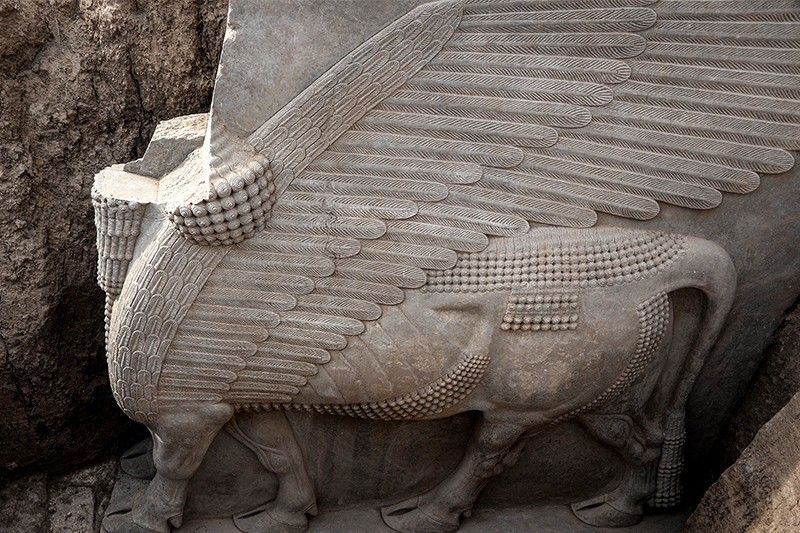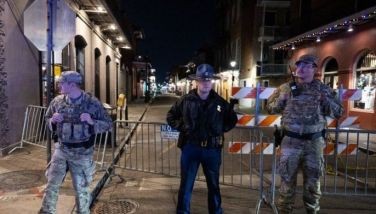Iraq dig unearths 2,700-year-old winged sculpture largely intact

MOSUL, Iraq — A dig in northern Iraq has unearthed a 2,700-year-old alabaster sculpture of the winged Assyrian deity Lamassu, which was found largely intact despite its large dimensions.
Only the head was missing and that was already in the collection of the Iraq Museum in Baghdad after being confiscated by customs officers from smugglers in the 1990s, the dig's French leader Pascal Butterlin said.
"I never unearthed anything this big in my life before," Butterlin said of the 18-tonne sculpture measuring 3.8 by 3.9 metres (about 12.5 by 12.8 feet). "Normally, it's only in Egypt or Cambodia that you find pieces this big.
"The attention to detail is unbelievable," said the professor of Middle East archaeology at the University of Paris I Pantheon-Sorbonne.
Erected at the entrance to the ancient city of Khorsabad, some 15 kilometres (10 miles) north of the modern city of Mosul, the sculpture shows the Lamassu, an Assyrian deity with a human head, the body of a bull and the wings of a bird.
It was commissioned during the reign of King Sargon II who ruled from 722 to 705 BC and erected at the city's gates to provide protection, Butterlin said.
First mentioned in the 19th century by French archaeologist Victor Place, the relief dropped from public records until the 1990s when Iraqi authorities earmarked it for "urgent intervention".
It was during this period that looters pillaged the head and chopped it into pieces to smuggle abroad.
The rest of the relief was spared the destruction wreaked by the Islamic State jihadist group, which overran the area in 2014, because residents of the modern village of Khorsabad hid it before fleeing to government-held territory, Butterlin said.
- Latest
- Trending































